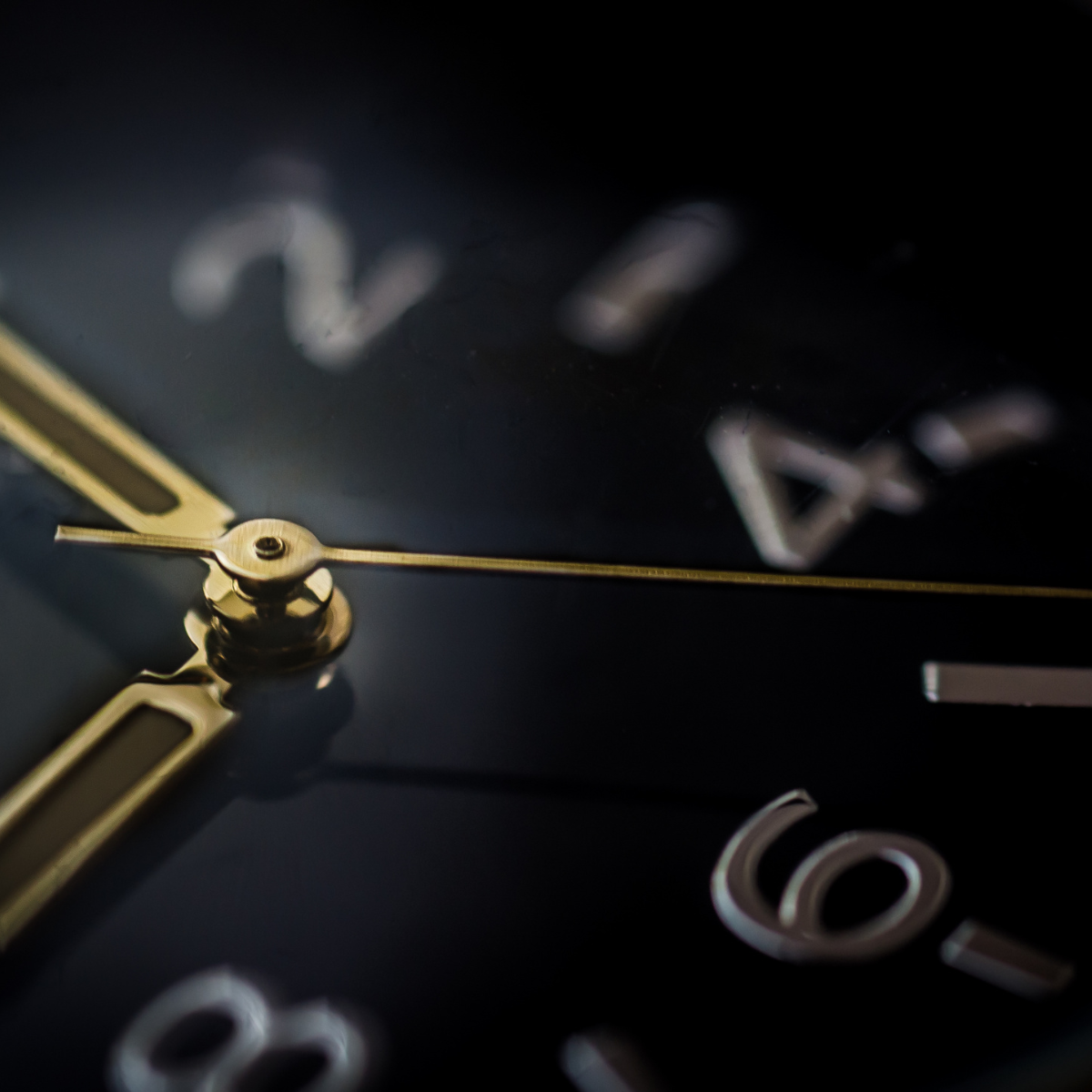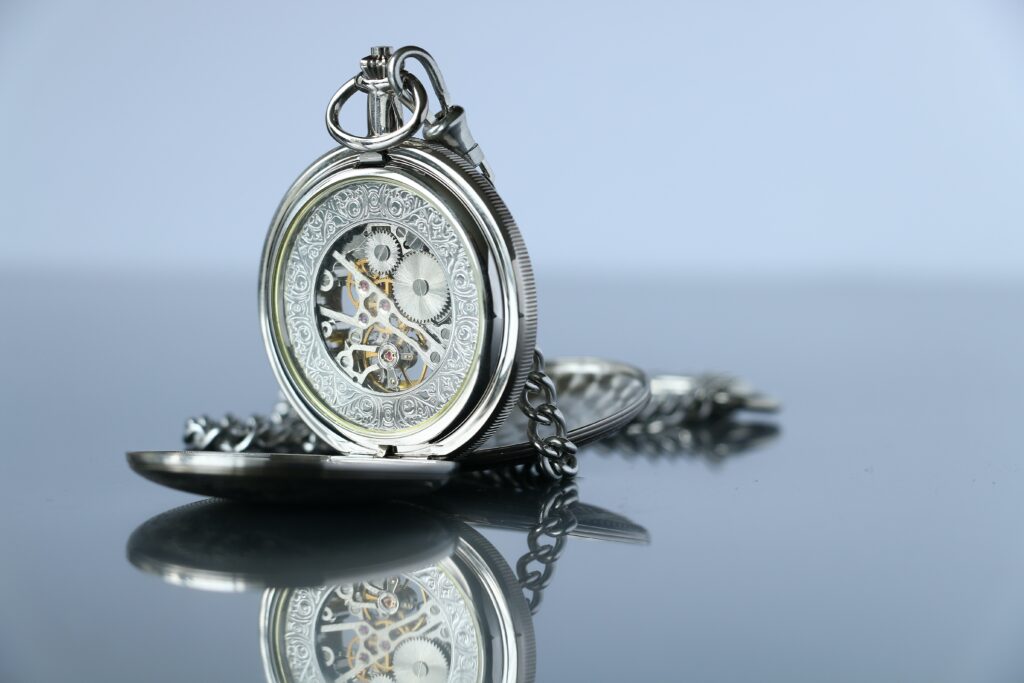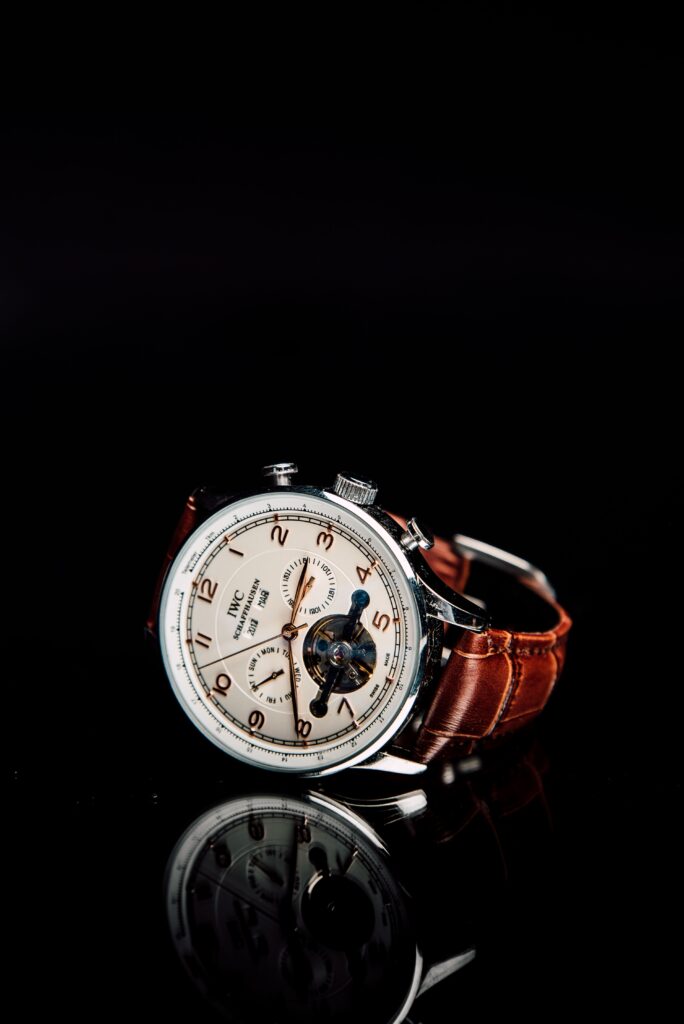
Men’s watches are not just accessories; they are also symbols of style and elegance. However, there has always been a common question among men – what side should they wear their watches on? Understanding the significance behind this decision and how it can impact one’s appearance is crucial. In this article, we will explore the traditional and modern perspectives on which side men should wear their watches and provide valuable insights to help you make an informed choice.

Understanding the Traditional Norm
Cultural traditions and watches
Watches have long held cultural significance in various societies around the world. In many cultures, watches are viewed as a symbol of wealth, status, and sophistication. The wearing of a watch is often seen as a reflection of one’s personal style and taste.
Societal norms for wearing watches
Throughout history, there have been societal norms dictating the preferred side for wearing a watch. Traditionally, men have worn watches on their left wrist, while women have worn them on their right wrist. This norm has been passed down through generations and continues to be followed by many individuals.
Evolution of watch wearing norms
However, over time, societal norms and fashion trends have evolved, leading to a shift in watch wearing practices. Some men now prefer to wear their watches on the right wrist, breaking away from the traditional norm. This shift can be attributed to various factors, including personal comfort, dominant hand preference, and individual style choices.
The Left Wrist Watch-Wearing Phenomenon
Historical aspects of wearing watch on left wrist
The tradition of wearing watches on the left wrist can be traced back to historical practices. In the early 20th century, wristwatches were primarily worn by men in various military operations. As soldiers typically wore their watches on their left wrists for practical reasons, this practice became ingrained in the culture.
Practical reasons for wearing watch on left wrist
There are practical reasons behind the preference for wearing watches on the left wrist. The majority of individuals are right-handed, and by wearing a watch on the left wrist, it leaves their dominant hand free for tasks that require precision and dexterity. Additionally, wearing a watch on the non-dominant wrist reduces the chance of accidentally damaging the watch while engaging in daily activities.
Preference of men wearing watches on left wrist
The left wrist watch-wearing phenomenon has become deeply ingrained in men’s fashion. Many men prefer to wear their watches on the left wrist as it has become associated with traditional masculinity. Furthermore, the left wrist has become the recognized position for watch adornment, and deviating from this norm may be seen as unconventional or even eccentric by some individuals.
Why Some Men Wear Watches on the Right Wrist
Right-handed versus Left-handed
One of the primary reasons why some men choose to wear watches on the right wrist is their handedness. Left-handed individuals may find it more comfortable to wear their watches on the right wrist as it allows for easy access to the watch controls with their dominant hand. By wearing the watch on the right wrist, left-handed individuals can efficiently operate the watch without any hindrance.
Comfort and ease of use
Comfort and ease of use play a significant role in the decision to wear a watch on the right wrist. Some individuals may find it more comfortable or natural to have the weight of the watch on their non-dominant wrist. Additionally, wearing a watch on the right wrist may make it more accessible for tasks such as adjusting the time or utilizing additional functions.
Breaking conventional norms
There is an emerging trend among fashion-forward individuals who are breaking the traditional norm of wearing watches on the left wrist. These individuals prioritize personal style and self-expression over societal conventions. By wearing a watch on the right wrist, they are making a bold statement and challenging the established norms.
Role of Dominant Hand in Choosing Watch Wearing Side
Statistics of right-hand versus left-hand dominance
When considering the dominant hand in choosing the watch wearing side, it is essential to examine the statistical distribution of right-hand versus left-hand dominance. The majority of the global population is right-hand dominant, which has contributed to the traditional preference for wearing watches on the left wrist.
Practicality of wearing watch on non-dominant wrist
Wearing a watch on the non-dominant wrist offers practical advantages. For right-handed individuals, a watch on the left wrist ensures that their dominant hand remains free for tasks that require precise movements. Similarly, left-handed individuals can maintain convenience and ease of movement by wearing their watch on the right wrist.
Exceptions to the dominant-hand rule
There are exceptions to the dominant-hand rule, where individuals may choose to wear their watch on the non-dominant wrist despite being right-handed or left-handed. This could be due to personal comfort preferences, style choices, or specific activities that require a different wrist orientation. Ultimately, the choice of watch wearing side is an individual decision influenced by various factors.

Impact of Profession on Watch Wearing Side
Special considerations for military personnel
Military personnel often adhere to specific watch wearing practices dictated by their respective armed forces. In many military traditions, watches are worn on the non-dominant wrist, primarily the left wrist, to maintain uniformity and ease of use during operations.
Professions that may require unique watch wearing side
Certain professions, such as healthcare workers, chefs, or musicians, may require unique watch wearing sides based on their job requirements. For example, a surgeon may choose to wear their watch on the non-dominant wrist to avoid interference during surgical procedures. These professionals must consider practicality and safety when deciding where to wear their watches.
Advent of wearable technology and impact on watch wearing side
The advent of wearable technology, such as smartwatches and fitness trackers, has further blurred the line between traditional watch wearing sides. These devices often offer multiple wearing options and can be worn on either wrist. The versatility and functionality of wearable technology have given individuals more freedom in deciding how and where they wear their watches.
Cultural and Regional Variations in Watch Wearing Side
Cultural traditions and symbolism of watches
Cultural traditions and symbolism play a significant role in determining watch wearing sides. In some cultures, wearing a watch on a specific wrist may hold symbolic meaning associated with luck, wealth, or spirituality. For example, in certain Asian cultures, wearing a watch on the left wrist is believed to bring good fortune.
Regional preferences for watch wearing side
Regional preferences for watch wearing sides can vary across countries and continents. While the left wrist is traditionally favored in many Western countries, there are regions where the right wrist is the preferred option. These regional differences highlight the diversity in cultural practices and fashion trends worldwide.
Modern shift in cultural and regional norms
With the globalization of fashion and the influence of social media, cultural and regional norms regarding watch wearing sides have become more fluid. Younger generations, in particular, are embracing personal style and breaking away from traditional practices. As a result, there is a modern shift towards individualism and self-expression in choosing the watch wearing side.

Role of Fashion and Personal Style
Watches as a fashion statement
Watches have transformed from mere time-telling devices to fashion accessories. They are now integral parts of an individual’s personal style and can make a bold fashion statement. The choice of watch wearing side is often influenced by how it complements the overall aesthetic and outfit.
Impact of personal style on watch wearing side
Personal style plays a significant role in determining the watch wearing side. Some individuals prefer to wear their watches on the left wrist to follow the traditional norm and maintain a classic, timeless look. Others may opt for the right wrist to add a touch of uniqueness and contemporary flair to their style.
Trendsetters breaking the norms
Trendsetters and fashion influencers have a significant impact on breaking away from the traditional norms of watch wearing sides. Their daring choices and innovative styles often inspire others to step outside their comfort zones and experiment with different wrist orientations. As a result, fashion trends are constantly evolving, and watch wearing sides continue to diversify.
Considerations When Wearing Multiple Watches
Why some men wear multiple watches
Wearing multiple watches has gained popularity as a fashion trend among some men. This practice allows individuals to showcase their watch collection, express their personal style, and create a unique look. Layering watches on both wrists or using specialized watch straps can create a visually striking statement.
Balancing style and comfort when wearing multiple watches
When wearing multiple watches, it is essential to strike a balance between style and comfort. The weight and bulkiness of multiple watches can affect the overall comfort and movement of the wrists. Careful consideration should be given to the size, weight, and ergonomics of each watch to ensure a comfortable wearing experience.
Choosing sides when wearing multiple watches
When wearing multiple watches, the choice of watch wearing side becomes a more complex decision. Some individuals may choose to wear watches on both wrists to distribute the weight evenly. Others may decide to focus on one wrist as the primary showcase for their collection. Ultimately, the choice depends on personal preference, comfort, and overall aesthetic goals.
How Watches are Designed for Wrist Sides
Design considerations for left wrist watches
Designing watches for the left wrist requires special considerations. The placement of the crown, buttons, and additional features should be intuitive for right-handed individuals. The size and weight distribution should also be optimized to ensure a comfortable fit on the left wrist.
Design considerations for right wrist watches
Similarly, designing watches for the right wrist necessitates specific considerations. The placement of controls and features should be suitable for left-handed individuals, ensuring ease of use and accessibility. The ergonomics should be carefully tailored to fit the contours of the right wrist comfortably.
How design influences watch wearing side
The design of a watch can influence the wearer’s choice of watch wearing side. Watches specifically designed for the left wrist may encourage individuals to conform to the traditional norm. Conversely, watches designed for the right wrist may attract individuals who prefer to break away from the conventions and embrace a more unconventional style.
Future Trends in Watch Wearing Side
Influence of smartwatches and fitness trackers
The rise of smartwatches and fitness trackers has introduced a new dynamic in the world of watch wearing sides. These devices often offer interchangeable straps and versatile wearing options, allowing users to choose the side that suits their comfort and personal preferences. As smartwatches continue to gain popularity, the traditional norms of watch wearing sides may further evolve.
Shifting trends in men’s fashion
Men’s fashion trends are constantly evolving, reflecting changing perceptions of style and individuality. As fashion becomes more inclusive and diverse, traditional norms surrounding watch wearing sides may continue to be challenged. Men are increasingly given the freedom to experiment with different wrist orientations and create their own unique fashion statements.
How will men’s watch wearing side evolve in the future
The future of men’s watch wearing sides is likely to be characterized by greater individuality and personalization. With advancements in technology, customization options for watches will become more prevalent, allowing individuals to tailor their watch wearing experience to their specific needs and preferences. The watch industry will continue to adapt and innovate to meet the ever-changing demands of consumers.
















